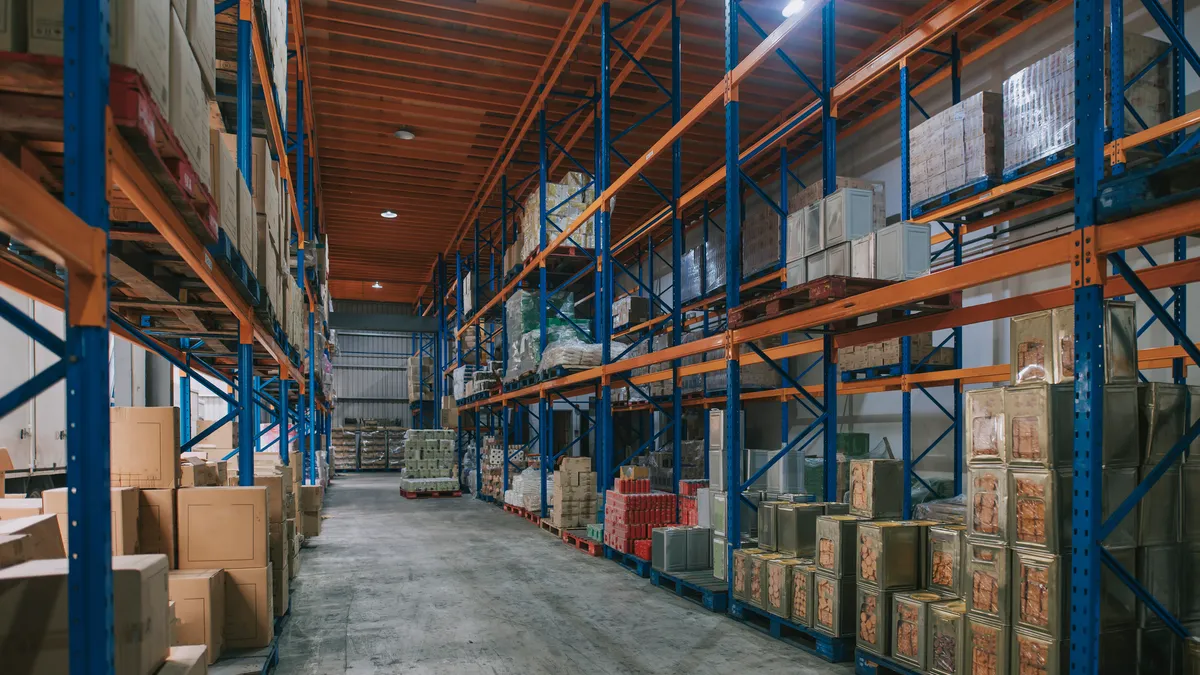Expect the onshore manufacturing push to boost an already booming warehouse sector, said James Breeze, senior director and global head of industrial and logistics research at commercial real estate consultancy CBRE.
The numbers back him up.
While sectors such as hospitality and office construction have seen double digit declines since the start of the COVID-19 pandemic, manufacturing building has grown 21.6%, according to U.S. Census Bureau data. And the recently passed $52 billion CHIPS Act is anticipated to promote even more investment into domestic manufacturing in the semiconductor space.
Massive manufacturing projects in the pipeline include Samsung’s 11 chip plants worth $191 billion in Texas, Intel’s $20 billion facility in Licking County, Ohio, and Taiwan Semiconductor Manufacturing Company’s $12 billion computer chip factory in Arizona, among others.
Here, Construction Dive talks with Breeze about why warehouse demand will increase because of the onshoring of manufacturing and which markets will benefit from new warehouse construction.
Editor’s note: This interview has been edited for clarity and brevity.
CONSTRUCTION DIVE: How will this increased focus of onshoring manufacturing affect demand in the warehouse sector?
JAMES BREEZE: Onshoring will increase demand for warehousing. Companies will increase their warehouse presence to distribute products close to the point of production, or major transportation arteries near the point of production. This is a net benefit to the warehouse sector, especially in markets where manufacturing demand is growing.
It's going to, in some ways, change how goods flow.
When there's more domestic manufacturing, there's going to be more of a shift to major interstate highways, and maybe the use of air or rail.
That will positively impact Middle America markets.
What markets specifically are you seeing that are really benefiting or will benefit from this push?
If you look at Louisville, Kentucky, Chicago, Austin – or really anywhere in Texas – those kinds of midpoint markets could definitely benefit from manufacturing.
Also, we're seeing manufacturing grow a lot in Phoenix, in Greenville, South Carolina and the Ohio market.
You're going to want to locate your distribution centers close to where production is, or somewhere that you can reach a good chunk of the country.
You want to look at where is manufacturing growing the most domestically. What's the easiest way to distribute that product within the country? Then that's where you will shift some of your distribution strategies.
Is there some anecdotal evidence you’re seeing that supports this trend?
A few.
I live in Phoenix and there's been a significant increase in manufacturing activity.
What we are also seeing is that distribution centers are being developed within or kind of encircling some of these manufacturing facilities.
So, that's a case in point where you see developers betting essentially that occupiers are going to want to be near that point of production.
We're also seeing it in Greenville, South Carolina, which is a very diverse manufacturing market, but also a really strong distribution market. You're seeing increases from the companies who are also manufacturing in that area.
What about for primary markets outside of those emerging markets?
There's still other traditional drivers of demand: inventory control, ecommerce sales growth and population shifts.
Overall industrial is still a very solid real estate product type.
There’s still record low vacancy rates, record high rent growth, really strong net absorption and leasing activity numbers. So, from that standpoint, it's still a very solid product type.
The onshoring of manufacturing is just another check mark.














